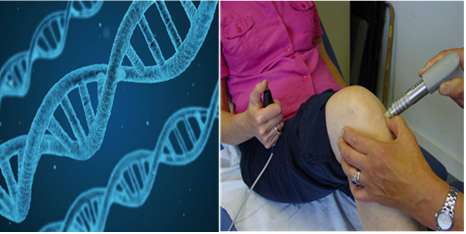Different genes may be involved in distal and local sensitization

Full reference: Kouraki, A., Doherty, M., Fernandes, G. S., Zhang, W., Walsh, D. A., Kelly, A., & Valdes, A. M. (2022). Different genes may be involved in distal and local sensitization: A genome-wide gene-based association study and meta-analysis. European Journal of Pain, 26, 740– 753. https://doi.org/10.1002/ejp.1902
Pain is one of the most debilitating problems for people with osteoarthritis and has a big impact on their quality of life.
Many people with osteoarthritis experience pain that they describe as numbness, electric shocks, or a burning, itching sensation that can come suddenly and without obvious reason. We call this `neuropathic-like pain’.
The brain, spinal cord and nerves influence the way the body feels pain. This process is called pain sensitisation. Pain sensitisation in areas of the body away from the painful joint may suggest a role of the central nervous system in pain, whereas pain sensitisation in areas close to the painful joint may suggest a role of inflammation in pain.
People with neuropathic-like pain or with pain sensitisation can experience constant pain even after having had joints replaced by surgery. So, understanding the causes of pain sensitisation and neuropathic-like pain is essential for developing effective treatments to help these patients.
It is already known that risk for developing pain is, to some extent, influenced by our genetic code, or DNA you inherit from your parents. No single region of the DNA, or gene, exists which causes pain. Rather, it is a combination of thousands of these genes that increase a person’s risk.
We studied which genes are associated with neuropathic-like pain after joint replacement surgery and with pain sensitisation in people who have osteoarthritis.
We found that neuropathic pain related genes are involved with sensitisation in areas of the body away from the joint, whereas inflammation related genes are involved in sensitisation close to the painful joint. We also found some genes that were associated both with sensitisation away from the joint, and with neuropathic-like pain. Therefore, we concluded that different biological processes may be involved in sensitization close to and away from an osteoarthritic joint. Shared genetic mechanisms are implicated in sensitization away from the affected joint, and pain characteristics described as numbness, electric shocks, or a burning or itching sensation.